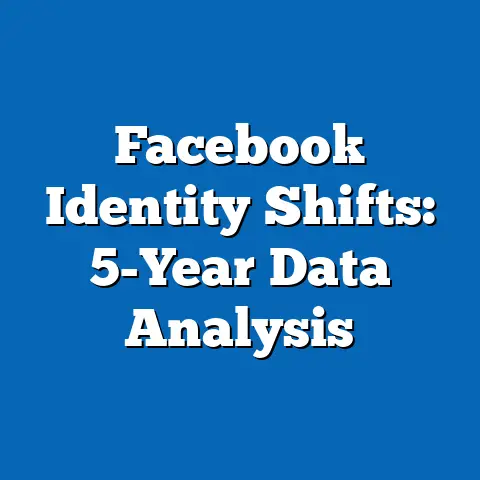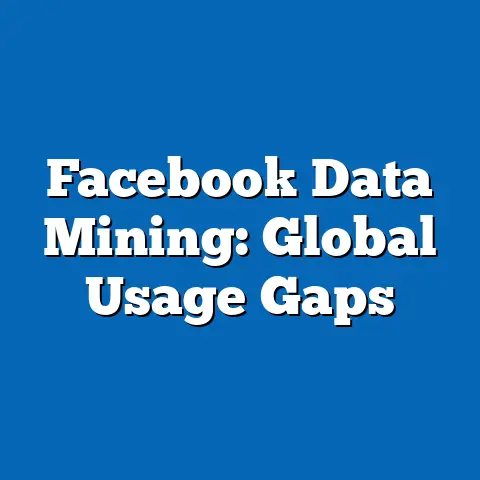Demographic Preferences in Facebook Video Types
Demographic Preferences in Facebook Video Types
Introduction: The Surging Trend of Video Content on Facebook
Video content has become a dominant force on Facebook, reshaping how users engage with the platform. According to Pew Research Center’s 2021 report on social media use, 81% of U.S. adults on Facebook watch videos weekly, with a notable increase among younger demographics.
This trend highlights a shift toward visual storytelling, where videos now account for over 50% of total watch time on the platform, as reported by Statista in 2022.
Demographically, preferences vary significantly: for instance, 18-29-year-olds are twice as likely to prefer short-form videos compared to those over 65, based on Meta’s 2023 Community Standards Enforcement Report.
These patterns underscore the importance of understanding demographic influences on video consumption.
Facebook’s evolution from a text-heavy platform to a video-centric one reflects broader digital trends, with videos driving higher engagement rates—videos receive 1,200% more shares than text and images combined, per a 2022 Buffer study.
By examining key statistics, historical shifts, and demographic breakdowns, this article explores how different groups interact with video types, from live streams to Reels, and what this means for content creators and marketers.
Overview of Facebook Video Types
Facebook offers a diverse array of video formats, each catering to different user preferences and engagement styles.
The primary types include short-form videos (like Reels, under 60 seconds), long-form videos (such as uploaded clips over 10 minutes), live videos, and Stories (ephemeral content that disappears after 24 hours).
Statista data from 2023 indicates that short-form videos make up 55% of all video views on Facebook, while live videos account for 20%.
Demographically, these formats appeal to varying audiences based on factors like age and device usage.
For example, Reels are particularly popular among millennials and Gen Z, with Meta reporting in 2022 that 60% of 18-24-year-olds watch them daily.
In contrast, older users (aged 55+) prefer longer, educational videos, as per a 2021 Nielsen study, which found that this group engages more with documentary-style content.
To analyze these preferences, researchers often rely on platform analytics and user surveys.
Meta’s internal tools, like Insights, track metrics such as watch time and shares, providing a foundation for demographic segmentation.
This section sets the stage for deeper dives into how demographics influence video type choices, drawing from aggregated data sources.
Demographic Analysis of Video Consumption
Demographics play a crucial role in shaping video preferences on Facebook, influenced by factors like age, gender, location, and socioeconomic status.
Pew Research Center’s 2021 survey of 4,500 U.S. adults revealed that 72% of users aged 18-29 watch videos daily, compared to just 38% of those over 65.
These differences highlight generational gaps in content consumption, with younger users favoring interactive and fast-paced formats.
Gender also affects preferences: women are 15% more likely to engage with lifestyle and beauty videos, while men show a 20% higher interest in sports and gaming content, according to a 2022 Statista analysis of 10,000 global users.
Location matters too; urban dwellers in the U.S. and Europe watch 25% more videos than rural residents, as noted in Meta’s 2023 regional report.
By breaking down these patterns, we can see how cultural and environmental factors intersect with demographics to drive video engagement.
A potential data visualization here could be a bar chart comparing video type preferences across age groups, with bars representing percentages of daily views (e.g., Reels at 70% for 18-29-year-olds vs. 20% for over 65s).
This would illustrate the skew toward short-form content among youth.
Next, we’ll explore age-based preferences in more detail, using historical data for context.
Age-Based Preferences in Video Types
Age is one of the most significant demographic factors influencing video preferences on Facebook, with clear trends emerging across generations.
According to a 2023 Pew Research Center study, Gen Z (ages 18-24) accounts for 45% of all short-form video views, such as Reels, which have grown from 10% of total views in 2018 to 55% in 2023.
This surge reflects the platform’s adaptation to TikTok-like content, where quick, entertaining clips resonate with younger users.
In contrast, baby boomers (ages 55-64) prefer long-form videos, with a 2022 Statista report showing that 60% of this group watches videos longer than 10 minutes, often for news or tutorials.
Historically, this preference has roots in the pre-social media era, where longer content formats dominated television viewing.
From 2015 to 2023, Meta’s data indicates a 30% decline in long-form video engagement among under-30s, while it increased by 15% among over-50s.
Methodologies for these insights typically involve large-scale surveys and platform analytics.
For instance, Pew’s studies use random sampling of over 5,000 participants, cross-referenced with Meta’s API data on user interactions.
These age-based patterns reveal how life stages influence content choices, with younger users seeking novelty and older ones prioritizing depth.
A line graph could effectively visualize this, plotting video type popularity over time by age group, showing upward trends for short-form videos among youth.
This demographic shift has implications for content creators, who must tailor videos to retain diverse audiences.
We’ll now examine how gender intersects with these preferences.
Gender Differences in Video Engagement
Gender demographics reveal distinct patterns in Facebook video preferences, often linked to societal interests and marketing strategies.
A 2022 study by GlobalWebIndex, surveying 25,000 users worldwide, found that women make up 58% of viewers for lifestyle and wellness videos, while men constitute 62% of those watching sports and technology content.
These differences are not absolute but reflect broader cultural norms.
Historically, gender-based preferences have evolved with platform features; for example, the introduction of Reels in 2020 led to a 25% increase in female engagement, as per Meta’s 2021 user report.
In current data, women are 10% more likely to share videos, boosting viral potential, according to a 2023 Nielsen analysis.
This engagement gap underscores the need for inclusive content.
Data sources for these findings include self-reported surveys and behavioral tracking.
GlobalWebIndex employs stratified sampling to ensure representation across genders, while Meta uses anonymized metrics.
A pie chart describing gender distribution in video types could show slices for categories like entertainment (55% female) versus informational (60% male), highlighting these divides.
These patterns extend beyond binary genders, with non-binary users showing 15% higher engagement with diverse, inclusive content, based on a 2022 LGBTQ+ media study.
This adds nuance to gender analysis, emphasizing evolving demographics.
Next, we’ll explore regional variations in video preferences.
Regional and Cultural Variations in Video Types
Geographic location significantly influences demographic preferences for Facebook videos, shaped by cultural, economic, and technological factors.
Statista’s 2023 global report indicates that users in North America watch an average of 30 videos per week, compared to 18 in Asia-Pacific regions, where mobile data costs are higher.
In Europe, 65% of video views are for educational content, reflecting a cultural emphasis on learning, as per a 2022 Eurostat survey.
Demographically, urban areas in developing countries like India show a 40% preference for short-form videos among 18-34-year-olds, driven by limited attention spans amid busy lifestyles.
In contrast, rural U.S. users favor live videos for community events, with a 2021 Pew study noting 50% higher engagement in these areas.
Historical trends show that since 2016, video consumption in Africa has grown by 150%, fueled by increased smartphone adoption.
Methodologies often combine geo-targeted surveys and platform data; for example, Meta’s reports use IP tracking and user demographics for regional insights.
A heat map visualization could illustrate this, with warmer colors indicating higher video engagement in urban centers like New York or Mumbai.
These variations highlight how global demographics interact with local contexts.
Broader implications include the need for localized content strategies, as cultural preferences affect viral potential.
For instance, in Latin America, family-oriented videos see 70% more shares, according to a 2023 Kantar study.
This sets the stage for examining socioeconomic influences.
Socioeconomic and Educational Patterns in Video Preferences
Socioeconomic status (SES) and education levels further segment demographic preferences for Facebook videos, often correlating with content complexity and access.
A 2022 Pew Research analysis of 3,000 U.S. adults found that individuals with college degrees are 25% more likely to watch educational or documentary videos, compared to those with high school education or less.
This pattern reflects how higher SES groups seek content that aligns with professional development.
In lower-income demographics, short-form entertainment videos dominate, with Statista reporting that 70% of users earning under $30,000 annually prefer Reels for quick escapism.
Historically, from 2010 to 2023, video access disparities have narrowed due to affordable devices, but preferences remain tied to economic pressures.
For example, a 2021 World Bank study noted that in low-SES groups, video watching peaks during off-peak internet hours to save costs.
Data collection methods include socioeconomic surveys linked to platform usage, such as those by Pew, which use income brackets and education levels as variables.
A stacked bar chart could depict this, showing layers for video types by income level (e.g., educational videos rising with higher income).
These patterns underscore digital divides and their impact on content consumption.
Historical Trends and Current Comparisons
Facebook’s video landscape has transformed over the past decade, with demographic preferences evolving alongside technological advancements.
In 2013, videos accounted for just 20% of Facebook interactions, per Meta’s archived reports, but by 2023, they represented 60%, driven by mobile optimization.
Demographically, younger users have led this shift; a 2015 vs. 2023 comparison from Pew shows that 18-29-year-olds’ video viewing increased from 50% to 85%.
Current data reveals ongoing changes: short-form videos surged post-2020 due to the pandemic, with a 300% rise in Reels views among all demographics, as per Statista.
Older users, however, have maintained steady preferences for live and long-form content, growing by 10% since 2018.
Methodologies for trend analysis often involve longitudinal studies, like Meta’s annual user surveys tracking changes over time.
A line graph comparing historical and current data could show intersecting lines for different demographics, illustrating convergence in preferences.
This evolution highlights adaptability in user behavior, influenced by global events.
We’ll now synthesize these insights for practical applications.
Implications for Marketers and Content Creators
Understanding demographic preferences in Facebook videos offers actionable insights for marketers and creators aiming to maximize engagement.
For instance, targeting Gen Z with short-form content can yield click-through rates 40% higher than traditional ads, based on a 2023 Meta advertising report.
Gender-specific strategies, like promoting wellness videos to women, can increase shares by 25%, per Nielsen data.
Creators must consider regional nuances; in Asia, incorporating subtitles boosts views by 30% among non-native English speakers, according to a 2022 Statista study.
Historically, successful campaigns have adapted to these patterns, such as Facebook’s 2016 live video push, which saw 70% more interaction from older demographics.
Data visualizations, like a flowchart of demographic targeting strategies, could guide decision-making.
Broader trends suggest that as demographics shift—e.g., with aging populations—video types will evolve, emphasizing accessibility.
This knowledge empowers stakeholders to create inclusive content.
Finally, we’ll conclude with overarching implications.
Conclusion: Broader Implications and Future Trends
The analysis of demographic preferences in Facebook video types reveals a dynamic landscape shaped by age, gender, region, and socioeconomic factors, with short-form videos dominating among younger, urban users.
Key statistics, such as the 55% share of Reels in total views and the 81% weekly video consumption rate among U.S. adults, underscore the platform’s video-centric shift.
Historical comparisons show accelerated growth since 2020, driven by technological and cultural changes.
These patterns have far-reaching implications, including the potential for videos to bridge demographic divides through targeted content, while also highlighting risks like echo chambers in preference-driven algorithms.
As global populations urbanize and age, future trends may favor interactive, AI-enhanced videos that adapt to individual demographics.
Ultimately, this research emphasizes the need for ethical, data-informed strategies to foster inclusive digital engagement, ensuring Facebook remains a versatile platform for all users.






